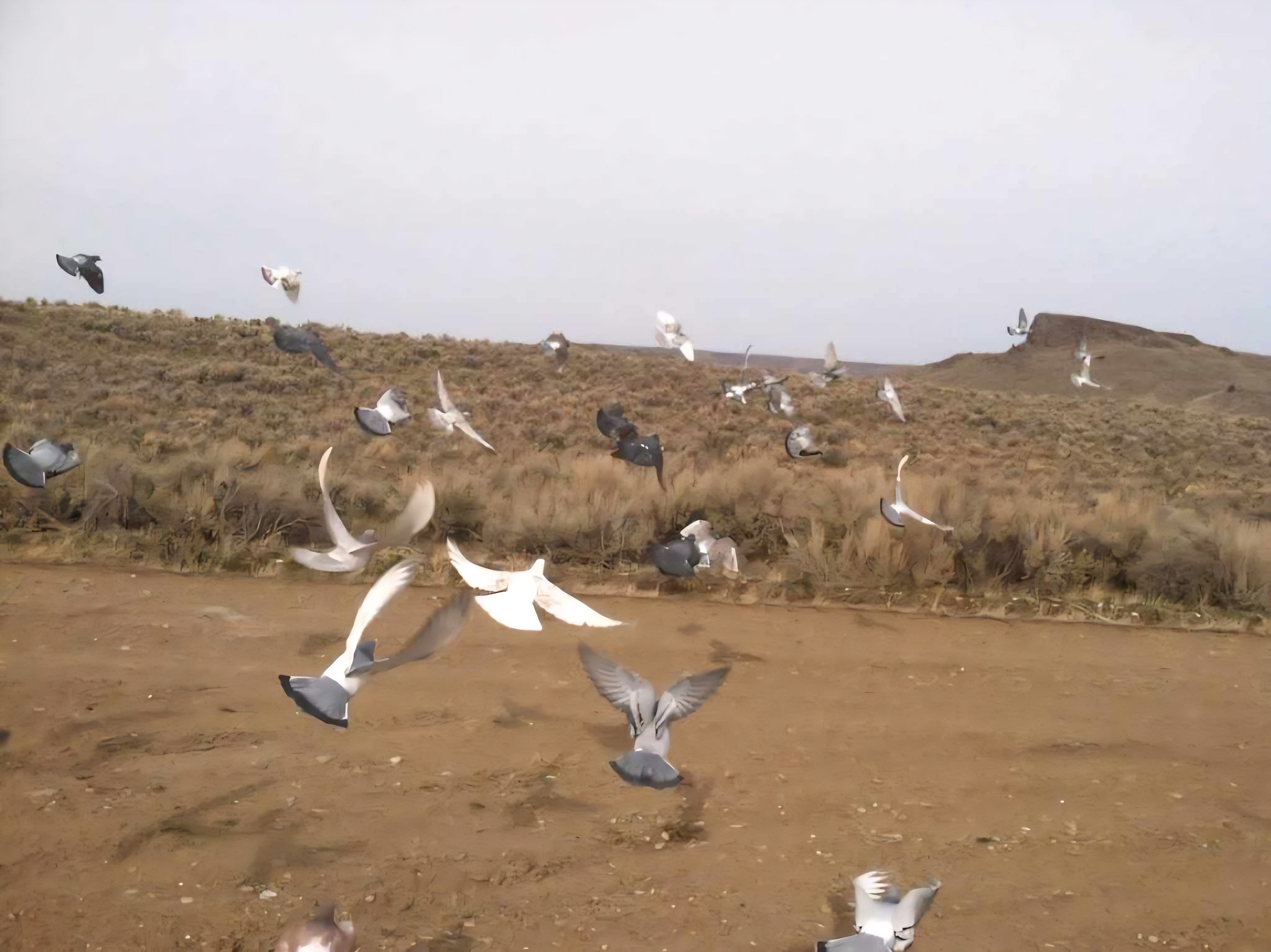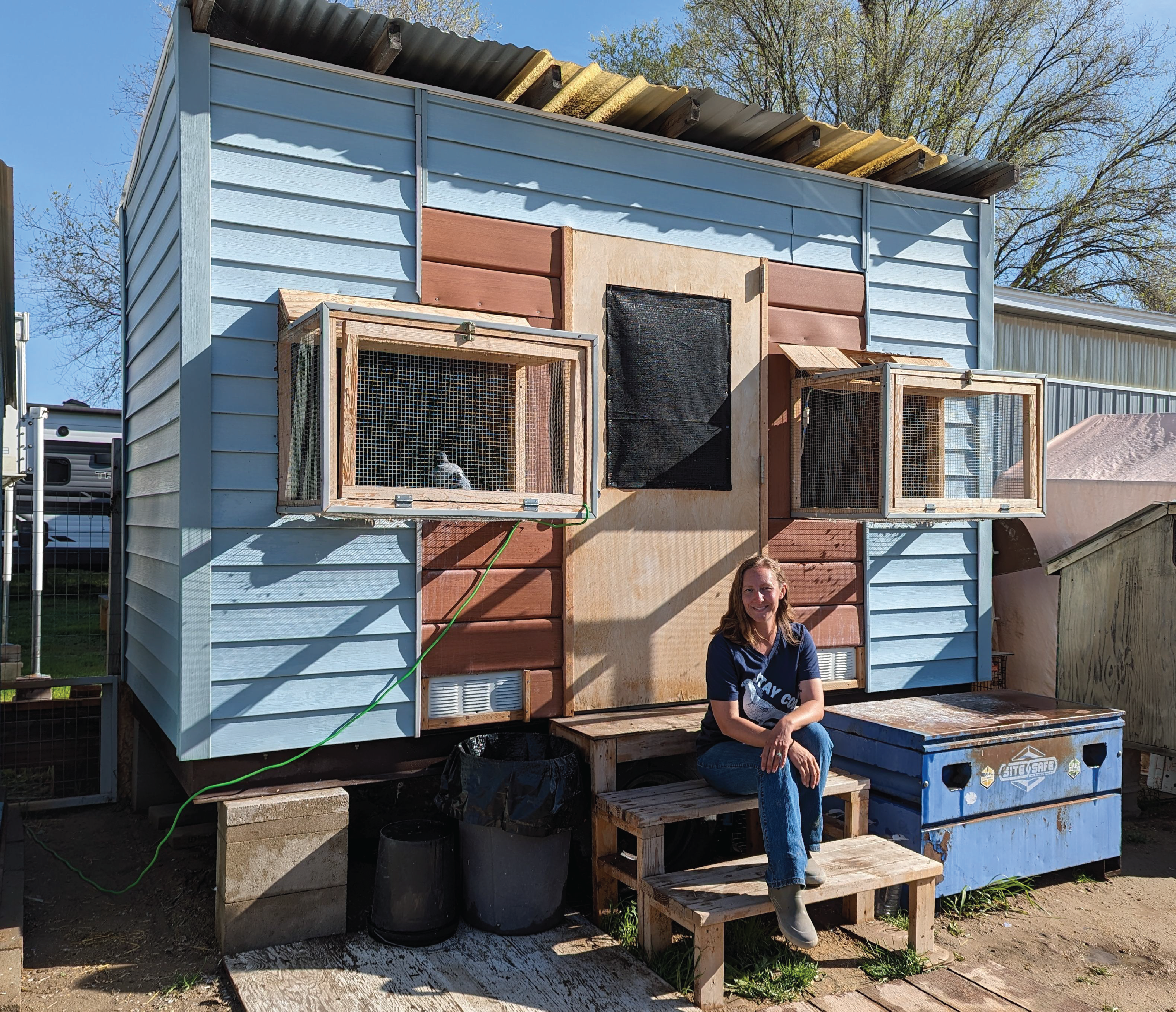
4 minute read
A Wing Over the Finish Line
BY CHELSEA CHAMBERS
It all happens in a flash. A rustle of feathers…the sound of a thousand wings taking to the skies at once. And they’re off! Hundreds, upwards of a thousand or more, pigeons soar off into the rising sun. Where are they heading? Well, home of course!
“I got my first pigeon in 1971,” said Mike Hackney. “I was 12 years old and one of our Boy Scout leaders had pigeons that he would take elk hunting. Every morning, he would use his pigeons to send word home to his wife, sharing his location and information about the hunt.” After this early introduction to homing pigeons, Hackney was quick to get his own birds. Fast forward over 50 years later and he is still fascinated. It’s become something his whole family is involved in.
“Oh, well I probably have about 400 pigeons now,” he said with a laugh. “Is that too much?”

Divided into old and young birds, the young pigeons (under one year old) are able to fly extensive distances with relative ease. But nearly all ages of pigeons can cover hundreds of miles in a single day, which isn’t too surprising when you factor in that they can fly up to 90 miles per hour, although they average between 50 and 60 mph.
During a typical race, one person or a group of people will haul all of the racing pigeons to the starting line, then they are released at once. While there are a variety of different kinds of races, a common style is one where the pigeons just simply return home. They are incredibly adept at knowing where “home” is.
“You train them slow at first, one mile here, two miles there,” Hackney explained. “Young birds are ready to race at four or five months old.” Pigeons are given a leg band when they are born that allows racers to track their locations. Racing contestants measure the distance between their home and the starting line of the races. The time the pigeon takes to return home and the total distance own is recorded and the fastest bird is declared the champion.

Another local racer, Jacquine Shippy, is relatively new to the sport but already in love. “I built my first racing loft last year,” Shippy said. “And I’m already building another one!” There are many factors to consider when getting involved in pigeon racing, but there is so much variety that you can really cater the hobby to your liking. “I just do it for sport,” said Hackney. “But there are some races where you can win tens of thousands of dollars.”
For Shippy, “Sifting through all the different methods and thought processes and finding a system that works for you was the hardest part for me.” She continued, “What to feed the birds, how to train them, how to keep them in shape, breeding practices, how to build your loft...it can get really complicated.”

Alongside racing and caretaking, these pigeon advocates are working to change the stigma surrounding the birds. A common misconception about pigeons is that they are dirty. “But in reality, they’re not dirtier than chickens or any other birds,” Shippy said. “You just have to clean your loft regularly just like you would a chicken coop or any other bird pen.”
...pigeon fanciers are some of the most generous people I’ve ever met, and they are more than happy to share their knowledge...
For those looking to get involved, Shippy suggests to “find some fanciers and/or a racing pigeon club in your area—pigeon fanciers are some of the most generous people I’ve ever met, and they are more than happy to share their knowledge and maybe even give you birds to help you get started. We are a dying breed and want this sport to survive.”
There are several local clubs in the Treasure Valley, including groups in Nampa, Marsing, and Boise. A great place to start your search is on Facebook groups, Pigeon.org, or Topigeon.com.










